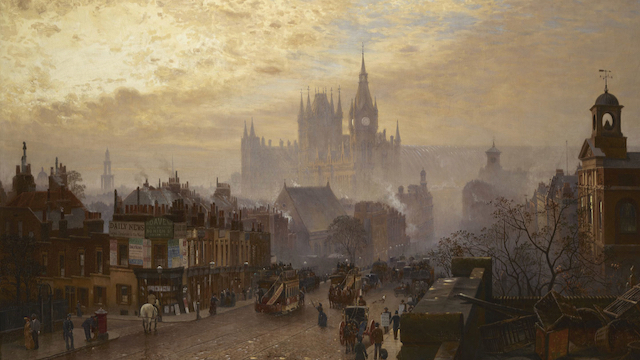
April 17, 1888: Toby led Holmes and Watson on a creosote trail. [SIGN]
(Source: A Day by Day Chronology of Sherlock Holmes according to Ziesler and Christ by William S Dorn DWNP, BSI.)
One of the errors mentioned in this story in the Canon involves Watson going to pick up Toby the bloodhound from Old Sherman to try to trail the creosote. The quotes from the story that apply to the problem are:
Chapter 5: The Tragedy of Pondicherry Lodge
[The room] appeared to have been fitted up as a chemical laboratory. A double line of glass-stoppered bottles was drawn up upon the wall opposite the door, and the table was littered over with Bunsen burners, test-tubes, and retorts. In the corners stood carboys of acid in wicker baskets. One of these appeared to leak or to have been broken, for a stream of dark-coloured liquid had trickled out from it, and the air was heavy with a peculiarly pungent, tar-like odour.
Chapter 6: Sherlock Holmes Gives a Demonstration
He whipped out his lens and a tape measure, and hurried about the room on his knees, measuring, comparing, examining, with his long, thin nose only a few inches from the planks, and his beady eyes gleaming and deep-set like those of a bird. So swift, silent, and furtive were his movements, like those of a trained bloodhound picking out a scent, that I could not but think what a terrible criminal he would have made had he turned his energy and sagacity against the law instead of exerting them in its defence. As he hunted about he kept muttering to himself, and finally he broke out into a loud crow of delight.
“We are certainly in luck,” he said. “We ought to have very little trouble now. Number One has had the misfortune to tread in the creosote. You can see the outline of the edge of his small foot here at the side of this evil-smelling mess. The carboy has been cracked, you see, and the stuff has leaked out.”
“What then?” I asked.
“Why, we have got him, that’s all,” said he. “I know a dog that would follow that scent to the world’s end. If a pack can track a trailed herring across a shire, how far can a specially-trained hound follow so pungent a smell as this? […]”
Chapter 6: Sherlock Holmes Gives a Demonstration
I wish you to go to No. 3, Pinchin Lane, down near the water’s edge at Lambeth. The third house on the right-hand side is a bird-stuffer’s; Sherman is the name. You will see a weasel holding a young rabbit in the window. Knock old Sherman up, and tell him, with my compliments, that I want Toby at once. You will bring Toby back in the cab with you.”
“A dog, I suppose?”
“Yes, a queer mongrel, with a most amazing power of scent. I would rather have Toby’s help than that of the whole detective force of London.”
Chapter 7: The Episode of the Barrel
Pinchin Lane was a row of shabby, two-storied brick houses in the lower quarter of Lambeth. I had to knock for some time at No. 3 before I could make any impression. At last, however, there was the glint of a candle behind the blind, and a face looked out at the upper window.
“Go on, you drunken vagabond,” said the face. “If you kick up any more row, I’ll open the kennels and let out forty-three dogs upon you.”
“If you’ll let one out, it’s just what I have come for,” said I.
“Go on!” yelled the voice. “So help me gracious, I have a wiper in this bag, an’ I’ll drop it on your ‘ead if you don’t hook it!”
Can any one tell us what a wiper is that it might need to be carried in a bag and threaten anyone Prevailing Sherlockian scholarly research indicates the word was supposed to be Viper and was a typo, misprint, or a certain Doctor’s handwriting was very hard to read, or the same certain Doctor/Author could not spell well.




















